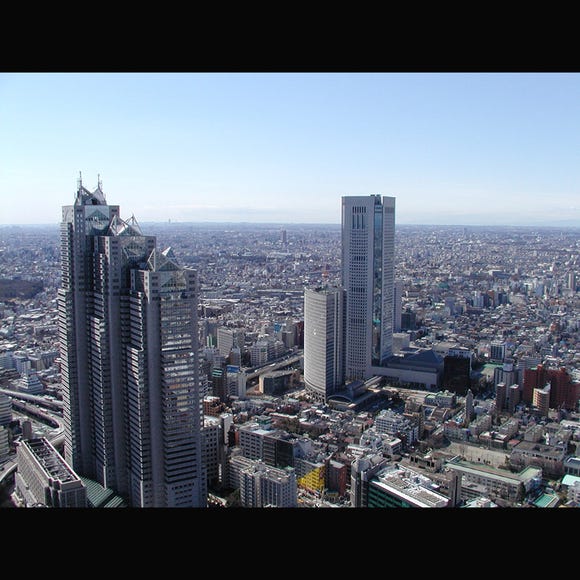
Nikko, located in northwestern Tochigi Prefecture, is an idyllic, picturesque town teeming with historical sites, breathtaking wilderness, and delectable delicacies. The town flourished as a gateway to the Tosho-gu Shrine, and today it has cultivated a unique culture as sightseers flocked to witness these magnificent structures.
While a well-known destination for international travelers to Japan, off the beaten path, lies a wealth of hidden gems, and the full breadth of Nikko remains largely unknown.
In this article, we’ll introduce a comprehensive list of Nikko recommendations for first-time visitors, including the best sightseeing spots, local food, shopping, and seasonal experiences.
(Main photo: PIXTA)
- Table of Contents
Getting Around Nikko
The main modes of transport when traveling through Nikko are trains and buses departing from Nikko Station. Buses are the most popular way to reach the World Heritage sites and the natural attractions further up the mountain, Okunikko. Many visitors find it cost-effective to use one of the Nikko Passes offered by Tobu, as they often include unlimited bus travel in specific areas. If you don't have a pass, you can purchase a day pass or use an IC card.
Here are a couple of things to keep in mind.
- Arrive Early
- Nikko can get very crowded, especially on weekends and during autumn foliage season. To avoid the crowds and long lines, it's highly recommended to take one of the earliest trains from Tokyo to arrive before 9 AM.
- Packing and Weather
- Since Nikko is in the mountains, the weather can be cooler than in Tokyo, especially at higher elevations around Lake Chuzenji. Pack in layers, even if you are visiting in summer.
Sightseeing
Explore the Wonders of Nikko Tosho-gu Shrine

Nikko Tosho-gu Shrine is one of Japan’s most prestigious spiritual structures and is a UNESCO World Heritage Site registered as part of the “Shrines and Temples of Nikko.” The shrine is famous for its connection to Tokugawa Ieyasu, the founder of the Tokugawa shogunate and instigator of the Edo period.
Many of the current Tosho-gu Shrine buildings were erected in 1636 under the third shogun Tokugawa Iemitsu, grandson of Ieyasu. Eight designated National Treasures and 34 Important Cultural Properties are within this complex, and they all offer a lot to explore. There are also dozens of other historic shrines and temples nearby, including Futarasan Shrine and Rinno-ji Temple, all encompassed by deep wilderness irresistible to the adventurous spirit!
-

-
Address
2301, Sannai, Nikko-shi, Tochigi, 321-1431
View Map -
Nearest Station
Nikko Station (JR Nikko Line)
20 minutes on foot
- Phone Number 0288-54-0560
-
Address
2301, Sannai, Nikko-shi, Tochigi, 321-1431
Private prayer tour at Nikko Toshogu Shrine and a horseback archery experience

Discover the samurai spirit through an immersive archery experience at Nikko Toshogu Shrine. Guests can practice kyudo (non-mounted) or yabusame (mounted), traditional Japanese archery styles, guided by instructors of the Ogasawara school, which has preserved samurai arts since the Kamakura period. The plan also includes a private prayer and guided tour at the World Heritage site that is the final resting place of Tokugawa Ieyasu.
Jump Back in Time at Edo Wonderland Nikko Edomura

If you’ve ever fantasized about being an Edo-period samurai, Nikko is where dreams become a reality!
Edo Wonderland Nikko Edomura is a historical theme park centered around an Edo period (1603-1867) townscape rendered with extraordinary detail. Inside are exciting shows and experiences, including the Oiran Courtesan Procession, Grand Ninja Theater, and even samurai training classes. Everything is designed to give you a real Edo period experience, and this park is perfect for families as they are suitable for both children and adults. Combine this with mazes, prisons, temples, and scrumptious retro dining, and you’ve got a day’s worth of fun!
-

-
Address
470-2, Karakura, Nikko-shi, Tochigi, 321-2524
View Map -
Nearest Station
Kinugawa-Onsen Station (Tobu Kinugawa Line)
- Phone Number 0288-77-1777
-
Address
470-2, Karakura, Nikko-shi, Tochigi, 321-2524
Wander the Nikko Tamozawa Imperial Villa Memorial Park

Nikko remains cool and refreshing in spring, making it the perfect season to explore both indoor and outdoor attractions. A brief walk from Tosho-gu, the Nikko Tamozawa Imperial Villa Memorial Park has both indoor and outdoor attractions that are centered around a grand, rustic old manor amongst breathtaking nature.
The villa was moved from Tokyo to Nikko in 1899, and it became a summer retreat for the Imperial Family. After decades of neglect following the Second World War, it was restored and opened to the public in 2000. It immediately became one of Nikko’s most iconic attractions. The interior of the manor contains over 100 rooms, which blend Edo and Meiji architecture with stylish Western trimmings, all encompassed by a spacious garden.
-

-
Address
8-27, Honcho, Nikko-shi, Tochigi, 321-1434
View Map -
Nearest Station
Nikko Station (JR Nikko Line)
10 minutes by bus
- Phone Number 0288-53-6767
-
Address
8-27, Honcho, Nikko-shi, Tochigi, 321-1434
Unwind in Onsen Hot Springs

Nikko is also a popular “onsen” (hot spring) town, boasting dozens of traditional ryokans (inns) which offer both accommodation and day-trip plans. From Autumn right through to the beginning of spring, any day with cold weather is perfect for enjoying Nikko’s local hot spring culture. In particular, amid dropping temperatures in winter, there is really nothing like warming up by getting into a hot spring. Many are nestled amongst radiant nature, which gives you plenty of time for soaking in seasonal beauty outside.
Some of the most popular hot springs in Nikko are at Nikko Yumoto Onsen, which sits on the northern shore of Lake Yunoko. Nikko Yumoto Onsen has a long history of soothing weary locals and travelers, going all the way back to the founding of Nikkozan Rinnoji Temple in 788. The lustrous, milky-white water feels soft on the skin and is renowned for its potent beautifying properties.
Hike Senjogahara Field

A popular hiking trail, no matter what time of year it is, Senjogahara Field is a flat, raised bog that stretches out for around 400 hectares. You can hike the trail yourself or reserve a half-day guided tour, and there are boardwalks that show the way. During the winter, you can rent snowshoes, but whether it is spring or winter, the surrounding scenic view is just amazing.
The most popular time of the year is the fall due to the golden color of the surrounding rich nature. This means that traffic tends to be busier at this time of the year as many people come to see Senjogahara Field’s famed autumn foliage.
-

-
Address
Chuguushi, Nikko-shi, Tochigi, 321-1661
View Map -
Nearest Station
Nikko Station (JR Nikko Line)
-
Address
Chuguushi, Nikko-shi, Tochigi, 321-1661
Kayak the Picturesque Lake Chuzenji

The centerpiece of the nature-rich “Oku Nikko” area is Lake Chuzenji, a picture-perfect body of water encircled by vast wilderness. Here you can unwind, cool down, and exercise with Lake Chuzenji kayaking experiences, allowing full appreciation of the beauty of the season.
The waters of the lake are fairly calm, so this experience is fine for even beginners and children. Paddle into the center of the lake and marvel at the amazing nature that surrounds you, while Mt. Nantai looms in the background.
-

-
Address
Chuguushi, Nikko-shi, Tochigi, 321-1661
View Map -
Nearest Station
Nikko Station (JR Nikko Line)
-
Address
Chuguushi, Nikko-shi, Tochigi, 321-1661
Canyoning at Nikko National Park
Canyoning is an exhilarating activity ideally suited for summer! It involves traversing canyons by hiking, climbing, sliding, abseiling, swimming, and more. While challenging, it is safe and suitable for beginners, and will leave you with a rewarding sense of adventure and achievement.
With an experienced, licensed guide helping you along the way, you’ll dive deep into the pristine wilderness of Nikko National Park. Being far off conventional trails, this side of Nikko remains largely undocumented by travel guides, taking you back in time to a primeval version of Japan.
Jaw-Dropping Foliage at Kirifuri Falls

Nikko is one of Japan’s fall foliage hotspots, and the parks, forests, plains, and streetscapes burst into a fiery parade of colors come autumn. Stunning foliage can be appreciated throughout Nikko, including iconic sights like Shinkyo Bridge, making it a photographer’s paradise.
However, if you are an autumn lover, the first stop should be Kirifuri Falls, one of Nikko’s three famous waterfalls. This staggering 75-meter drop turns the falling water into a fine, refreshing mist, making it a popular getaway during the lingering heat of early autumn. While each season has its own allure, seeing it ablaze with red, yellow, and orange hues is the pinnacle of beauty!
Kegon Falls

Kegon Falls are a must-see sight in Nikko. At first sight, it becomes instantly apparent why Kegon Falls is ranked as one of Japan's three most beautiful waterfalls. At just under 100 meters tall, it stands powerfully apart from the otherwise serene surroundings. The view is breathtaking in late spring to early summer when it is engulfed by lush green overgrowth.
These falls in Japan serve as an outlet for nearby Lake Chuzenji, both of which can be seen from Kegon's free observation deck. To truly appreciate its impressive scale, tickets can be purchased to ride an elevator to the base of the falls. Those looking for more of a bird's-eye view can ride the nearby Akechidaira Ropeway to take in the entirety of the landscape.
-

-
Address
Chuguushi, Nikko-shi, Tochigi, 321-1661
View Map -
Nearest Station
Nikko Station (JR Nikko Line)
-
Address
Chuguushi, Nikko-shi, Tochigi, 321-1661
Become Enchanted by a Snow Festival

Sitting at a sizable altitude in inland Japan, Nikko receives its fair share of snowfall. The historic structures of Nikko shine brilliantly beneath the shimmering snow, making it well worth braving the freezing temperatures.
Brightening up the spirits of locals, snow festivals are commonplace throughout winter in Japan. Around late January, the Okunikko Yumoto Onsen Snow Festival is held, featuring jaw-dropping ice sculptures and an enhancing light-up called the “yukiakari.” If the cold weather is getting you down, spending an evening at this festival will doubtlessly cheer you up!
Snow Hiking in Unryu Valley
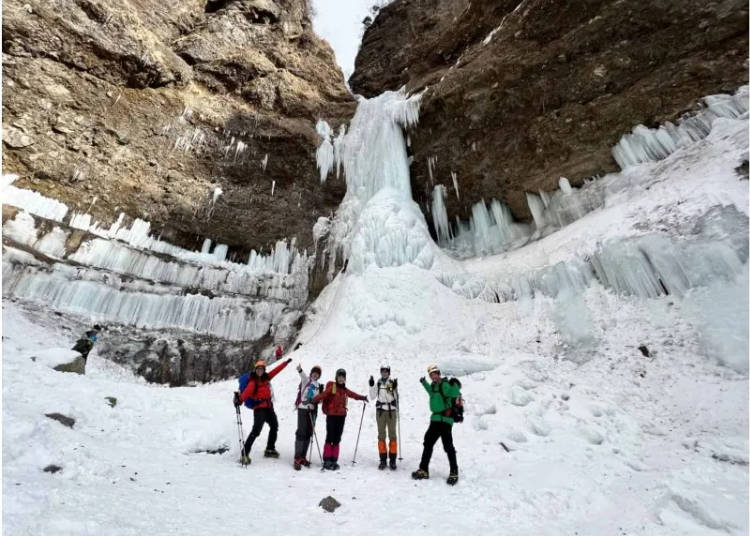
An exhilarating winter activity is the Unryu Valley Snow Hike, a challenging yet rewarding trek to one of Japan’s most spectacular winter views. This limited-time tour takes you on a journey through Nikko’s wilderness to witness a magnificent icefall and an “ice temple,” where a 120-meter waterfall freezes over and countless icicles form a stunning ice curtain. Provided with all the necessary equipment, including crampons and a helmet, you’ll embark on a guided hike at an altitude of 1,400 meters, culminating in a breathtaking panorama that is only available for a few weeks each year.
Food
Strawberry Parfait

Tochigi Prefecture produces the most strawberries in Japan, and they are widely considered to be the best in the nation. These strawberries have bright hues and bulky sizes, and they are absolutely bursting with a nutritious sweetness balanced with a refreshing tartness.
Whether it is just strawberries by themselves or with yoghurt or ice cream, they burst with flavor, and parfaits jam-packed with strawberries are the tastiest way to get your fill, and you can find these sweet creations at many cafes around the prefecture. So if you are in Nikko, and you see strawberries on menus – don’t miss out!
Yuba Tofu

One of the most beloved dishes of Nikko is “yuba,” a type of tofu made from soy milk boiled into a thin skin. While yuba is found across several regions of Japan, Nikko’s rendition is unique for having the skin wrapped up for a more voluminous helping. There are specialty restaurants serving fresh, delicious yuba all throughout Nikko, so definitely give it a try!
Tochigi Wagyu

Wagyu beef is one of the most coveted delicacies in Japan, and, while most famous in Kobe, wagyu of remarkable quality can be enjoyed throughout the country. Nikko has proudly developed its own share with “Tochigi Wagyu,” sourced from carefully bred and raised Japanese Black cattle of the highest ranking. It is praised for its fine, delicate marbling and exudes gentle but potent flavors. It is served as various dishes, including steak, Hamburg steak, yakiniku, and more, at restaurants throughout Nikko, so be sure to save some room in your budget!
Sakamanju
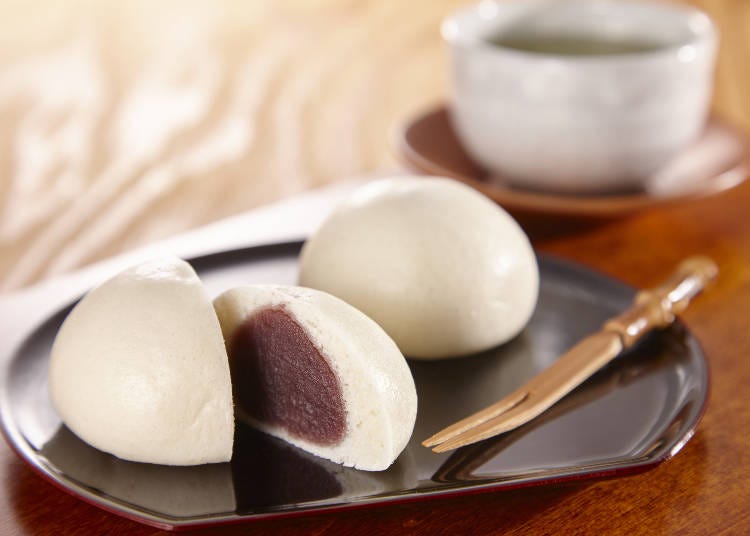
The majority of hot spring towns in Japan specialize in “manju” sweet steamed buns. Nikko is no exception, with the lesser-known “sakamanju” being particularly sought-after by visitors to the shrines and temples. Sakamanju use the same “koji” fermentation mold also used in sake brewing, making the flour-based pastry skin soft and tender while imbuing it with sake-like aromas.
While not as famous as other varieties, sakamanju are actually the oldest manju in Japan, and have been a staple in Nikko for hundreds of years. It’s even said that the Taisho Emperor, who reigned over Japan during the Taisho era between 1912 to 1926, covertly sought out sakamanju while visiting Nikko, so don’t miss out on these treats fit for an emperor!
Nikko Soba

With significant temperature drops between day and night, the climate of Nikko is ideal for buckwheat farming. Combine this with an abundance of pristine, natural water, and you’ve got everything you need for scrumptious, top-quality soba!
Naturally, Nikko boasts a wealth of soba dishes to indulge in, many incorporating the above-mentioned “yuba” tofu skin, adding a soft, pudding-like texture. No matter your travel fatigue, a helping of Nikko soba will perk you right up, ready for another day’s sightseeing!
Kakigori

Kakigori is a simple dessert made from flavored shaved ice, and is a staple of summer in Japan. Delicious yet cheap, it cools down the body while exciting the taste buds during the sweltering, humid summer months.
Nikko has a surprisingly deep connection to this humble treat, hosting three of Japan’s five remaining traditional “icehouses,” which once numbered a hundred during the early Showa period. If you’re feeling overheated, track down one of these nostalgic icehouses and freshen up with this tasty pick-me-up.
Shopping

Shopping for local products is at the heart of the joy of traveling! Fortunately, despite its modest size, there’s plenty of shopping to do in Nikko, so make sure to pack extra bags!
・Nikko-bori (Nikko Woodcarving)
Originating in the early Edo period, Nikko-bori is the primary traditional handicraft of the region. The art form was born from carpenters brought to Nikko to build Tosho-gu Shrine, who would carve these trinkets in their free time. Nikko-bori pieces are noted for their elegant curves and exquisite lacquer coating.
・Nikko Pudding Tei Main Store
Lately, Nikko has become famed for its puddings owing to the work of Nikko Pudding Tei, just a 5-minute walk from Tobu-Nikko Station. Retro-cute glass jars promise a tantalizing assortment of flavors, including caramel, strawberry, coffee, matcha, chocolate, and more. There are also alluring seasonal versions, such as chestnut in autumn, cherry blossom in spring, and banana in summer. Puddings are made with fresh milk from Nikko’s Ozasa Farm, along with Tochigi strawberries and Nikko Goyouran Eggs.
・Nikko Geta
“Geta” are a form of traditional wooden sandal-like shoe now commonly seen at festivals and during hot spring sojourns. “Nikko geta” feature a similar sturdy base of wood with the addition of a stylish straw insole woven from bamboo skin. The unique design originates from “zori” straw sandals, which were required to be worn when entering the sacred grounds of the temples and shrines of Nikko. However, as many paths in Nikko were rough and graveled, and covered by deep snow in winter, these elegant yet delicate shoes needed some toughening up. The woven bamboo also makes them cool in summer and warm in winter, and has fantastic water absorbency, making Nikko geta fit comfortably all year round!
Book a Tour in Nikko
-
 Nikko Toshogu Shrine & Kegon Waterfall One Day Tour from Tokyo
Nikko Toshogu Shrine & Kegon Waterfall One Day Tour from Tokyo
Details & Bookings ▶
(Image: Klook) -
 Nikko World Heritage Day Tour from Tokyo
Nikko World Heritage Day Tour from Tokyo
Details & Bookings ▶
(Image: Klook) -
 Nikko Toshogu & Lake Chuzenji One Day Bus Tour from Tokyo
Nikko Toshogu & Lake Chuzenji One Day Bus Tour from Tokyo
Details & Bookings ▶
(Image: Klook) -
 Kinu River Rafting & Edo Wonderland from Tokyo
Kinu River Rafting & Edo Wonderland from Tokyo
Details & Bookings ▶
(Image: Klook)
Nikko is a destination that truly has something for everyone. With its rich history, stunning natural landscapes, and exciting activities, your first visit is just the beginning of a memorable journey. We hope you have an incredible trip!
*Prices and options mentioned are subject to change.
*Unless stated otherwise, all prices include tax.
Popular Tours & Activitiess
Recommended places for you
-

Don't Miss Out! The One Thing You Must Do Before Shopping at Mitsui Shopping Park LaLaport: Get Your Max 10% OFF Coupon Book
-

Get Ready to Catch 'Em All! First Ever Permanent Outdoor Pokémon Park Opening Near Tokyo!
-

LaLaport TOKYO-BAY North Building Now Open: Shop, Dine & Enjoy Events at LaLa arena, Just 2 Stops from Disney
by: Wemmy Chau
-

[Extended Offer!](12% OFF KKday Coupon) Mt. Fuji Autumn Leaves, Powder Snow & More! 15 Best Tours to Experience Japan in Fall & Winter
-

New Seibu L00 Series Launching in 2026! What to See Along the Tokyo-Area Golden Route
by: Guest Contributor
-

A Travel Game Changer! Go Hands-Free Between Tokyo and Kyoto with LUGGAGE EXPRESS by JTB and JR Tokai
by: Guest Contributor
Inspiration for Accommodations
-
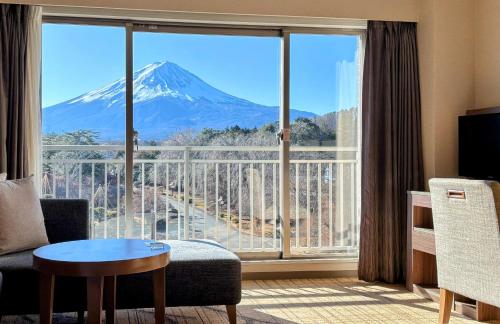
Enjoy Mt. Fuji from the Comfort of Your Room! Recommended Ryokan with Mt. Fuji View
-

Stay Near the Cherry Blossoms! Hotels for Cherry Blossom Viewing in Tokyo
-

Family-Friendly Hotels with Free Shuttle to Disneyland: Convenient Access for a Magical Stay
-

Top Ranked Hakone Hotels with Mt. Fuji View: Enjoy Stunning Scenery from Your Private Space
-
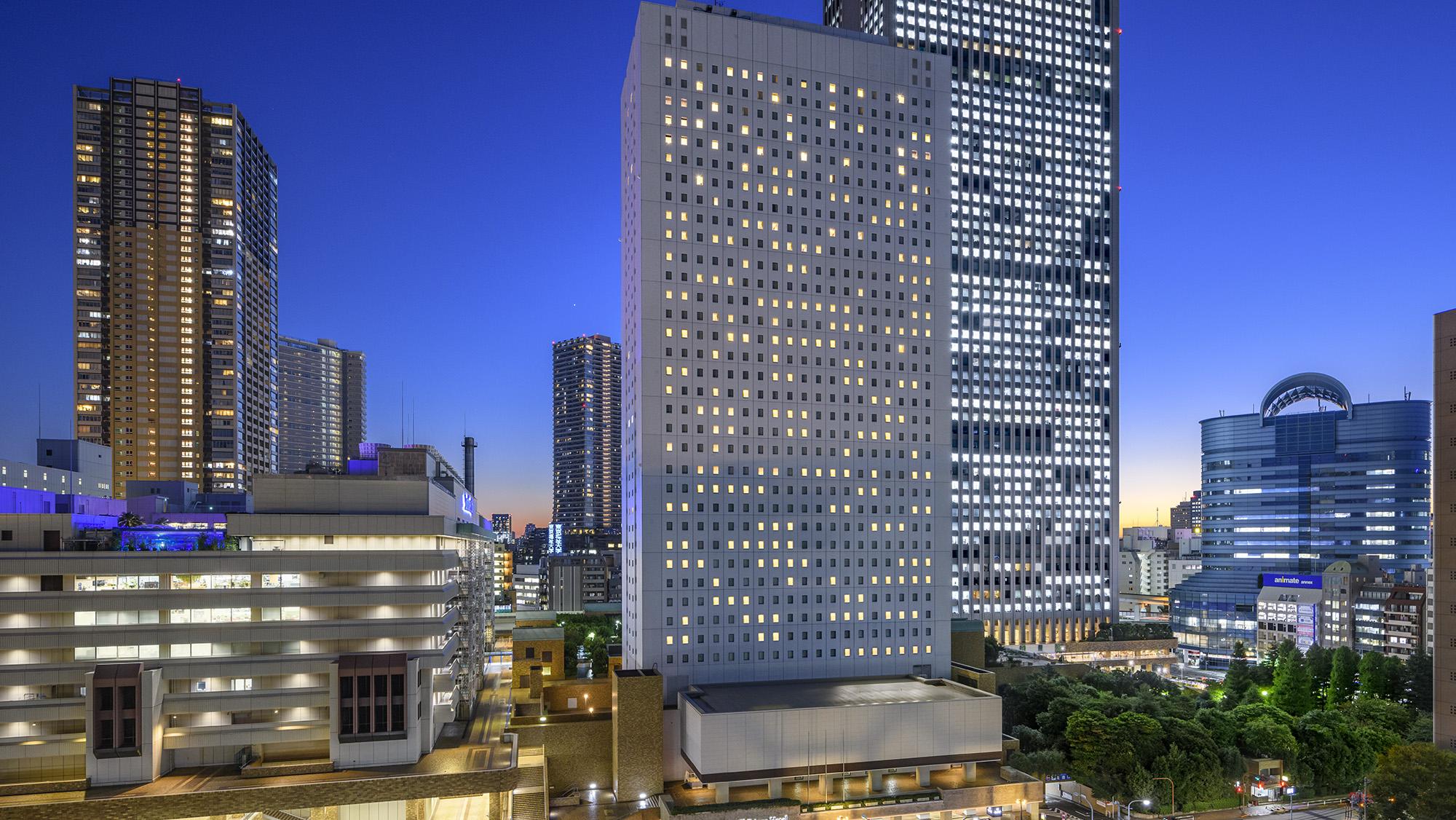
Convenient Tokyo Hotels with Airport Shuttle: Ideal for Families and Heavy Luggage
-

Stunning Tokyo Tower View Hotels: Enjoy Spectacular Scenery from Your Private Space
-

Convenient Asakusa Hotels with Kitchens: Ideal for Extended Family Visits
-

Experience Luxury: Hakone's 10 Best Five-Star Accommodations
-

Enjoy Mt. Fuji Autumn Leaves! Top Hotels Near the Popular Autumn Leaves Corridor
-

Experience Hakone Fall Foliage from Your Room with Stunning Views
-

Shibuya Crossing: Getting the Best View from the Deck at Magnet by Shibuya109!
-

The Best of Japan: 11 Major Cities Every Traveler Should Visit
-

Instagram Evergreen: Japan’s Top 10 World Heritage Sites and National Treasures!
by: Lucio Maurizi
-

Autumn in Japan 2025: Fall Foliage Forecast & Where to Enjoy the Colorful Leaves (+Tour Info)
-

Spending Wonderful Time Alone in Shibuya - Free Cosmetics and a Hundred-Yen Bus!
-

16 Secrets About Mt. Fuji, the Symbol of Japan: Even Japanese People Don’t Know That?!
- #best ramen tokyo
- #what to buy in ameyoko
- #what to bring to japan
- #new years in tokyo
- #best izakaya shinjuku
- #things to do tokyo
- #japanese nail trends
- #what to do in odaiba
- #onsen tattoo friendly tokyo
- #daiso
- #best sushi ginza
- #japanese convenience store snacks
- #best yakiniku shibuya
- #japanese fashion culture
- #best japanese soft drinks


































